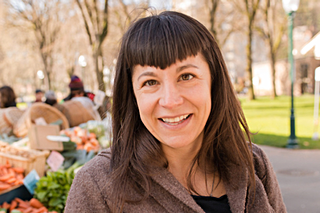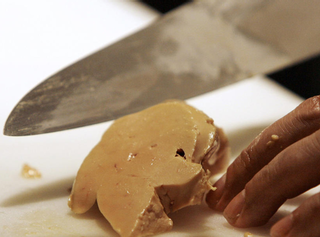
Podcast: Play in new window | Download (Duration: 18:32 — 15.2MB)
Subscribe: Google Podcasts | Spotify | Android | RSS | More
 Many vegetables don’t taste of anything much these days, but whose fault is that, really? Plant breeders produce what growers want, and growers want what people will buy. So why aren’t people buying flavour? Mostly because they aren’t being offered a real choice. Lane Selman, who works on organic projects at Oregon State University, discovered that although organic growers say they want disease resistance, for example, they don’t actually grow existing disease-resistant varieties “because they taste terrible”. Lane enlisted a handful of chefs to taste some peppers that a local breeder was working with. From that quiet beginning has blossomed the Culinary Breeding Network, which aims to “bridge the gap between breeders and eaters to improve agricultural and culinary quality”.
Many vegetables don’t taste of anything much these days, but whose fault is that, really? Plant breeders produce what growers want, and growers want what people will buy. So why aren’t people buying flavour? Mostly because they aren’t being offered a real choice. Lane Selman, who works on organic projects at Oregon State University, discovered that although organic growers say they want disease resistance, for example, they don’t actually grow existing disease-resistant varieties “because they taste terrible”. Lane enlisted a handful of chefs to taste some peppers that a local breeder was working with. From that quiet beginning has blossomed the Culinary Breeding Network, which aims to “bridge the gap between breeders and eaters to improve agricultural and culinary quality”.
For the past three years, Lane has organised a variety showcase that pairs chefs with breeders and growers to display their combined talents, creating interesting vegetable varieties and interesting dishes from those varieties. We talked about how the Culinary Breeding Network began and about the latest variety showcase.
Notes
- The Culinary Breeding Network has a website and the home page currently features a video of this year’s variety showcase. It’s fun.
- Lane’s video explaining the overall project is here.
- The breeders Lane Selman works with include Frank Morton, of Wild Garden Seed, Bill Tracy at the University of Wisconsin and Michael Mazourek at Cornell University.
- The Organic Seed Alliance is also a partner.
- All photographs (c) Shawn Linehan.
- It would be remiss of me not to take this opportunity to point you to an earlier episode about backyard vegetable breeding with Carol Deppe.


 Any way you slice it, foie gras — the fatty liver of a duck or goose — is a fighting matter. To animal rights activists it is quite obviously cruel and depraved. To many chefs and eaters, it is a delicious extravagance. To many other chefs and eaters, it is something they would rather not countenance. To the vast majority of French people, it is a symbol of their nation and an essential part of their identity, the rare product of smiling rustic grandmothers, making a bit of pin money on the side. And for the industrial producers responsible for 90% of French foie gras, those rustic grandmothers are icons of perfect marketing.
Any way you slice it, foie gras — the fatty liver of a duck or goose — is a fighting matter. To animal rights activists it is quite obviously cruel and depraved. To many chefs and eaters, it is a delicious extravagance. To many other chefs and eaters, it is something they would rather not countenance. To the vast majority of French people, it is a symbol of their nation and an essential part of their identity, the rare product of smiling rustic grandmothers, making a bit of pin money on the side. And for the industrial producers responsible for 90% of French foie gras, those rustic grandmothers are icons of perfect marketing.